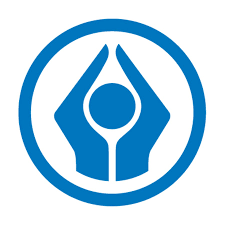Sanlam Investments, one of South Africa’s largest investment management companies, is using Project Portfolio Office’s simple to use, cost-effective project portfolio management (PPM) tool, PPO, for improved reporting and greater collaboration across the organisation.
Sanlam Investments offers a range of local and offshore investment products to end-investors, financial planners and institutions, including passively and actively managed unit trusts, hedge funds and segregated and pooled retirement funds.
One PPO instance, two PMO environments
The company is utilising PPO within two separate environments. Firstly, it is being used by the Sanlam Collective Investments (SCI) project management office (PMO). SCI is the management company that administers all the unit trusts within the Sanlam Group, and is the largest administrative business within Sanlam Investments.
Secondly, PPO is also being used by a more decentralised PMO that manages projects being run for the rest of the Sanlam Investments ‘cluster’.
Johan Pieters, CIO of SCI and a first-hand PPO user, explains that prior to the rollout of the PPM tool, his PMO in particular was run in a more “lightweight manner”.
“While we did have a formal SCI PMO in place and had agreed on basic project management principles, there was very little structure or control. This made it difficult to report on project performance levels. And with a PMO team of 20 people, including five project managers, six analysts and quality assurance team members, running with up to 20 projects at any given time, there were a lot of moving parts. We realised that the time had come to formalise the environment with the implementation of a fully-fledged PPM tool.”
Both PMO teams within Sanlam Investments had already been exposed to PPO through the Sanlam Personal Finance Business Change PMO, where it has been successfully used to reduce project-related technology costs by 40 percent by consolidating three different project management platforms into one.
Value-added reporting
The Sanlam Investments instance of PPO was championed by CIO, Gerard Barnardt, and Corene Schwartz, IT Governance & Special Projects. “Sanlam Investment’s overall objective was to consolidate all project information in one place for reporting purposes,” clarifies Schwartz. “The broader Sanlam Investments PMO services several business units within the cluster and needs to report-back to the operations committee at exco and board level.
“Previously, this was a lengthy process, as feedback had to be collected from the project managers and other involved parties; a process that would take up to a week, with a further week needed for collation.”
Now, customised reports can be pulled instantly from the PPM tool, within less than a minute. “Information is more current than before and we have far greater visibility on project performance, as well as risks and issues arising. This is a real advantage, as it now provides the type of transparency critical for executive reports,” she adds. “Another major benefit is that information from across the cluster is now centralised in one place.”
Pieters echoes these sentiments, claiming that, prior to PPO’s PPM tool rollout, it was extremely difficult to provide financial reporting, making it near impossible to answer questions on current financial status of the portfolio of projects. “The rollout of PPO has made a huge difference; information reported on to exco is now accurate, and therefore extremely valuable. PPO has essentially enforced a more structured approach to project management, with project statuses now clearly visible. Exco is able to decide where to deep-dive information, and where it just needs a quick view, something that could not be done previously.
“In fact, on the SCI PMO side, the improved level of reporting and better visibility has had a very positive impact on the quality of projects, creating cost savings within the projects themselves.”
Ease-of-use, regardless of experience levels
Managing a PMO team that includes members without formal project management experience could complicate the rollout and acceptance of a PPM tool within any environment. Not so within Sanlam Investments, says Schwartz, who explains that feedback from project managers and other individuals working on the system alike has been very positive. “The beauty of PPO is that it is intuitive and extremely easy to use, even for users without a project management background. In fact, PPO users within our area have more than doubled since rollout, mostly through word-of-mouth across the business.
“These varying experience levels were the reason that Sanlam Investment opted to go for a standard, ‘vanilla’ implementation of PPO, as we wanted users to get to grips with the discipline of using a project management approach, without overcomplicating the environment with too much configuration, only making small changes to the reporting process,” she states. “Through this approach, we’ve also seen a great improvement on collaboration across the business, allowing us to more closely align business and technology requirements.”
“Furthermore, within the SCI PMO, we have greater insight into resource management and can clearly see that 80 percent of resource time is being spent on projects, and 20 percent on support,” adds Pieters.
Notable guidance received
“We were very comfortable working with Project Portfolio Office, and were happy with the way they went about the rollout of PPO’s PPM tool. They offered a great amount of guidance and were able to give us a broader insight into the project management discipline,” Pieters continues. “We found this of particular value as an environment that didn’t really have strict project management disciplines to fall back upon.”
Says Guy Jelley, CEO and co-founder of Project Portfolio Office: “PPO was developed from an in-depth understanding of the problems specific to project environments, taking into account the best practices promoted by the leading research organisations in this field. It becomes a simple yet highly effective communication portal for all information pertaining to projects and portfolios. As a PPM tool, PPO brings together all the basic project management functions and disciplines into a simple and easy to use application, providing businesses like Sanlam Investments with access to a structured environment that ensures project transparency and success,” he concludes.


